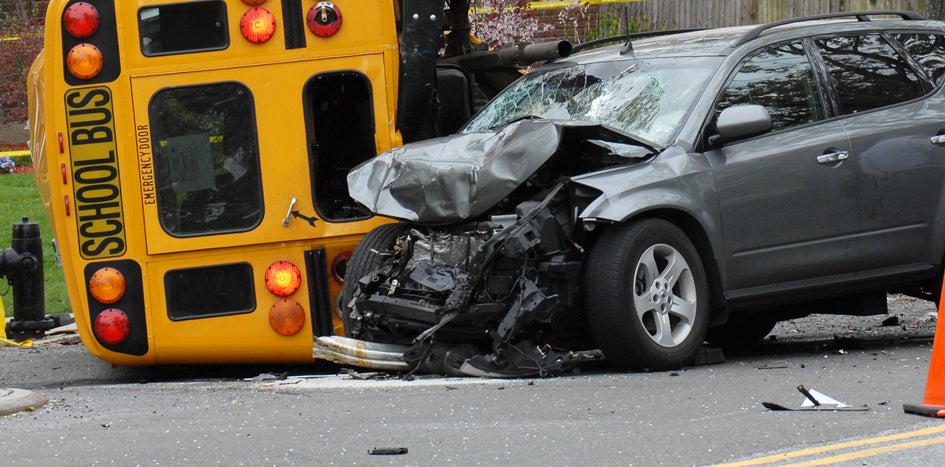Workplace Injury Trends That Drive Action
Workplace injuries in schools are shifting. Strains, slips, and falls still top the list, but more districts are wrestling with claims tied to student behavior, mental health, and workplace violence. These cases are often more complex and they stay open longer, which means more cost, more lost time, and more pressure on teams that are already stretched. The path forward starts with reading your data like a safety roadmap, and then placing simple, targeted controls where they’ll make a difference.
Totals vs. Trends: What’s the Difference?
Claim counts and costs over a given period, collectively called loss totals, are useful for planning budgets and updating school board members. But they rarely explain where or why injuries happen.
Loss trends are the patterns inside loss totals by day of week, time of day, campus, role, injury type, or student involvement. Trends point to factors you can influence, and they help you verify whether your corrective actions are working
Simply put, loss totals provide a big-picture view of how injuries impact a district. Trends tell you where to focus your efforts and how to prove your efforts were effective.
Trends vs Totals in Action
Consider this hypothetical scenario.
Last semester, a district reported 42 claims, which is on par with most semesters. Based solely on loss totals, leadership might have assumed nothing changed. But a loss trend review told a different story: 38% of claims were filed on Wednesdays, mostly between 2 and 4:30 p.m. Claims were clustered around dismissal, SPED last period, and kitchen cleanup. In many cases, fatigue, staffing shortages, and rushed tasks were the root causes.
Equipped with that information, the district made three small changes for eight weeks:
- Held short, Wednesday-morning huddles focused on slowing down, using de-escalation protocols, and asking for help with physical tasks
- Scheduled a float sub and an extra paraprofessional on Wednesdays for the busiest campuses
- Started kitchen cleanup earlier, with carts and glides to reduce strain-related injuries
The next quarter, total claims nudged from 42 to 41. However, the share of Wednesday injuries dropped from 38% to 22% and dismissal injuries fell from 8 to 3. Because staff used lift-aid equipment and asked for help with heavier lifts, strain-related injuries were less severe. As a result, average days to return to work after Wednesday incidents dropped from 7 to 4.
In this scenario, loss totals suggested nothing changed. Loss trends proved the district’s corrective actions were effective.
How to Leverage Totals and Trends
Most districts already collect the data they need to improve workplace safety:
- Incident reports capture what happened, as well as contributing factors, staff role, student involvement, and what was fixed the same day.
- Claims records include the diagnosis, treatment timeline, workers’ compensation benefits status, and total incurred (claims costs).
- Safety audits and campus walkthroughs assess physical hazards and potential risks.
- Near-miss reports and employee feedback add context you won’t find in a claim file.
Organize the information so you can answer four questions at a glance: where incidents cluster (campus, room type), when they spike (time of day, day of week, bell schedule), who is most exposed (role, experience, subs vs. regular staff), and what happens (injured body part, equipment used, unsafe behavior).
Focus on closing safety gaps through updated training, policy updates, and workplace design changes. Then track your progress using metrics like incident frequency, severity, near misses, and employee feedback.
Once you’ve turned the insight into action, share the data with district leaders. Ask for resources that unlock the next win, and commit to showing the impact on next quarter’s trend chart.
How the Fund Can Help
Your risk solutions consultant is a valuable partner who can help you:
- Find patterns in your data.
- Benchmark your results against similar districts.
- Provide detailed reports on claim frequency, severity, and costs.
- Bring ready-to-use tools and insights to help you strengthen your program.
From there, your consultant can guide you in making informed decisions, identifying areas for improvement, and enhancing safety.
Understanding and acting on loss trends is not about chasing numbers. It’s about protecting the people who keep your schools running. When you read trends, act on them, and keep score on a few measures that matter, your workers’ compensation program moves from “file the paperwork” to “fix the problem.”

Adriana Talbot
Adriana Talbot joined TASB Risk Management Services in 2023. As the go-to resource for members with Workers’ Compensation coverage, her responsibilities include onboarding, training, and providing compliance and claim-reporting support. Talbot brings more than 20 years of experience in local government, primarily serving as a workers' compensation analyst.
You May Also Like…
View All Related Insights
How To Manage and Mitigate Your Burn Risks
From bustling kitchens to science labs to maintenance and transportation shops, there are plenty of opportunities for burns to occur at your school or community college.

The Importance of a Thorough Accident Investigation
Conduct accident investigations to uncover the root causes of workplace injuries, correct them, and reduce the risk of similar injuries.

Fund Coverage 101: Intro to Cybersecurity Claims
Cybercrime is big business, and schools are tempting targets. Fund Privacy and Information Security coverage pays for covered claims, including incident response when appropriate.

A Bird’s Eye View of Integrated Pest Management Compliance
State law requires schools to designate a trained integrated pest management (IPM) coordinator and implement an IPM program that includes these core elements.
